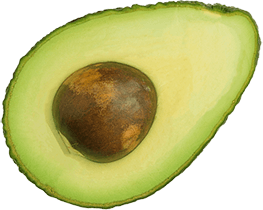Deeply committed to the "Nobody leaves our store unhappy" philosophy, we take cleanliness, friendliness and overall outstanding customer service very seriously.
Value Center Marketplace is a locally-owned family grocery store and market offering great values on the freshest high-quality foods and produce, with four locations throughout South Eastern Michigan.
We continually strive to offer the best produce and meats available, sourced straight from the local farmers at the Eastern Market. When you shop here, you not only know you’re supporting local farmers and suppliers, you can be sure that the items you purchase are always fresh. We put nothing but our best food forward every day.
Can’t find what you’re looking for? Our helpful staff will walk you right to it. Ready to checkout? We’ll make sure there’s a cashier ready to ring you up with virtually no wait. From the baggers to the managers, every single member of our team is dedicated to making sure you get the most enjoyable shopping experience available.


445.360a Section applicable to the sale at retail; conditions; conditions to bringing or joining in action;
exception.
Sec. 10a
Except as provided in subsection (3), this section applies to a sale at retail which meets all of the following conditions:
There is a price stamped on or affixed to the item.
The sale is recorded by an automatic checkout system.
The buyer is given a receipt which describes the item and states the price charged for the item. Before bringing or joining in an action as provided in section 10(2), within 30 days after purchasing an item,
the buyer who suffers loss because the price charged for the item is more than the price stamped on or affixed to the item shall notify the seller in person or in writing that the price charged is more than
the price stamped on or affixed. The notice shall include evidence of the loss suffered by the buyer. If, within 2 days after the notification, the seller tenders to the buyer an amount equal to the buyer
an amount equal to the difference between the price stamped or affixed and the price charged, plus an amount equal to 10 times that difference but which is not less than $1.00 or more than $5.00, the buyer
is barred from any further recovery for that loss. If the loss is suffered by the buyer within 1 transaction on 2 or more identical items, the amount to be tendered by the seller shall be the difference
on each item, plus an amount equal to 10 times the difference on a single item, but which is not less than $1.00 and not more than $5.00. If the seller does not tender this amount, the buyer may bring or
join in an action as provided in section 10(2).
One of the biggest areas of confusion in the law (known as the Consumer Pricing and Advertising Act No.449) has been a requirement that retailers pay consumers 10 times the amount of scanning overcharges (Section
445.360a). The overcharge fine need only be paid when the errors a direct scanning error and not errors caused by incorrect information in a Product Lookup (PLU) Code or similar errors made on non-scanning checkout
systems. In addition, the overcharge fine is only required if the price is affixed to the product.
Should 2 of the same products be scanned at a higher price marked, the 10 times the difference fine need only be paid on 1 of the 2 items. The consumer should receive only the difference in price on the 2nd item
We offer the following questions, answers, and samples as explanation…
A product is on sale for 49¢. The price is not stamped on the product, or it is still marked the regular price of 69¢. The item scans at the regular price, not on sale. The consumer is due 20¢ for the item overcharge,
but is not due the fine because the item was not marked or did not scan higher than the price marked.
A shelf tag or sale sign states 69¢. The item is marked 69¢. It scans 79¢. The consumer is due the amount of the overcharge, plus a fine amount of the additional 10 times the overcharge. In total, the consumer should
receive $1.10. That is, 10¢ for the overcharge and $1.00 for the fine.
A customer buys a cantaloupe, but the cashier accidentally rings it up under the honeydew melon PLU code. The customer is given the difference between the price charged and the price it should have been. There is
no penalty on human errors.
A sign is left up past the sale date. The item is marked and scans at regular price. The sale price should be honored since the sign remained up. However, there is no overcharge fine since the error was in violation
of the state’s advertising laws (the sign was wrong) and not an error caused through the scanning system.



